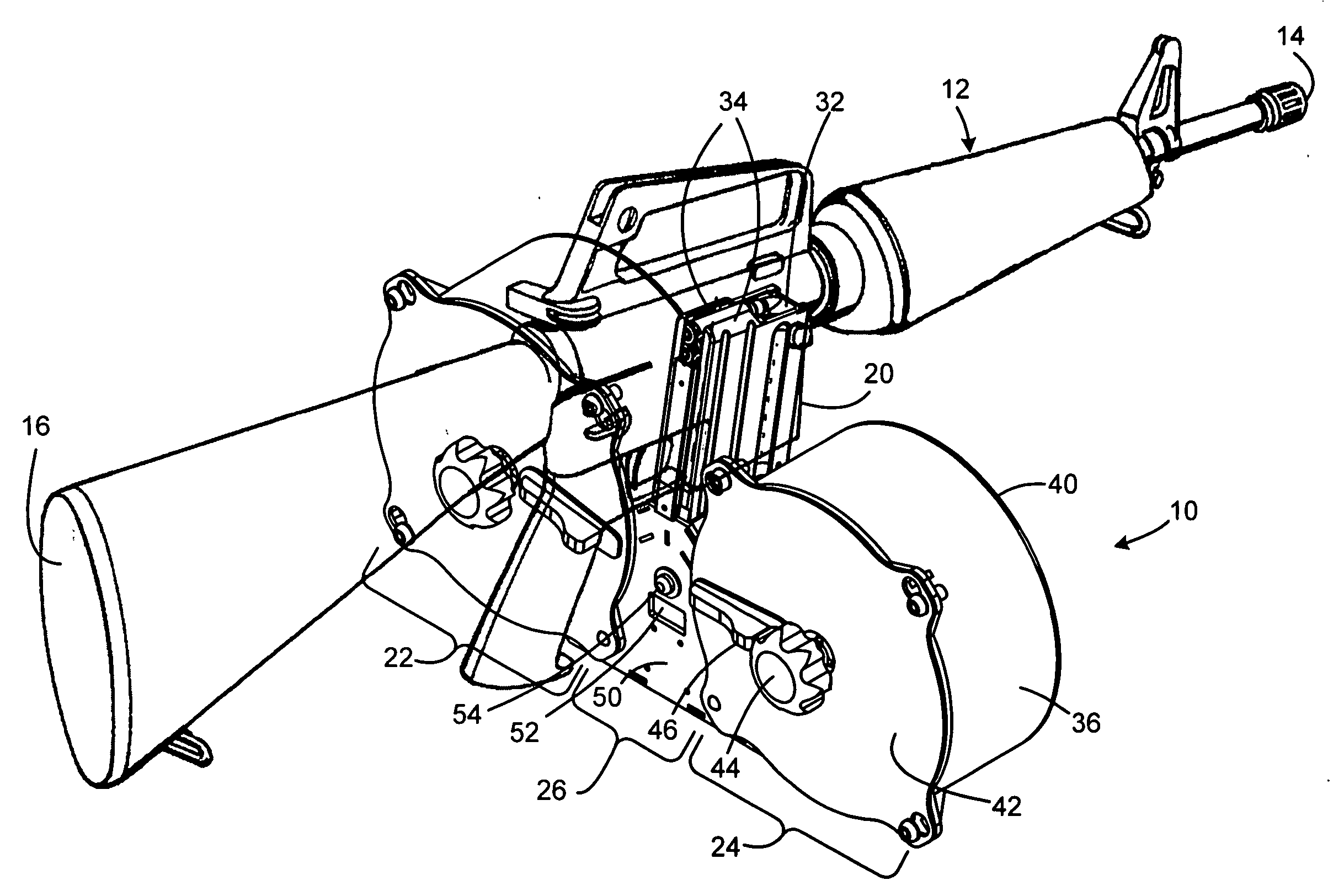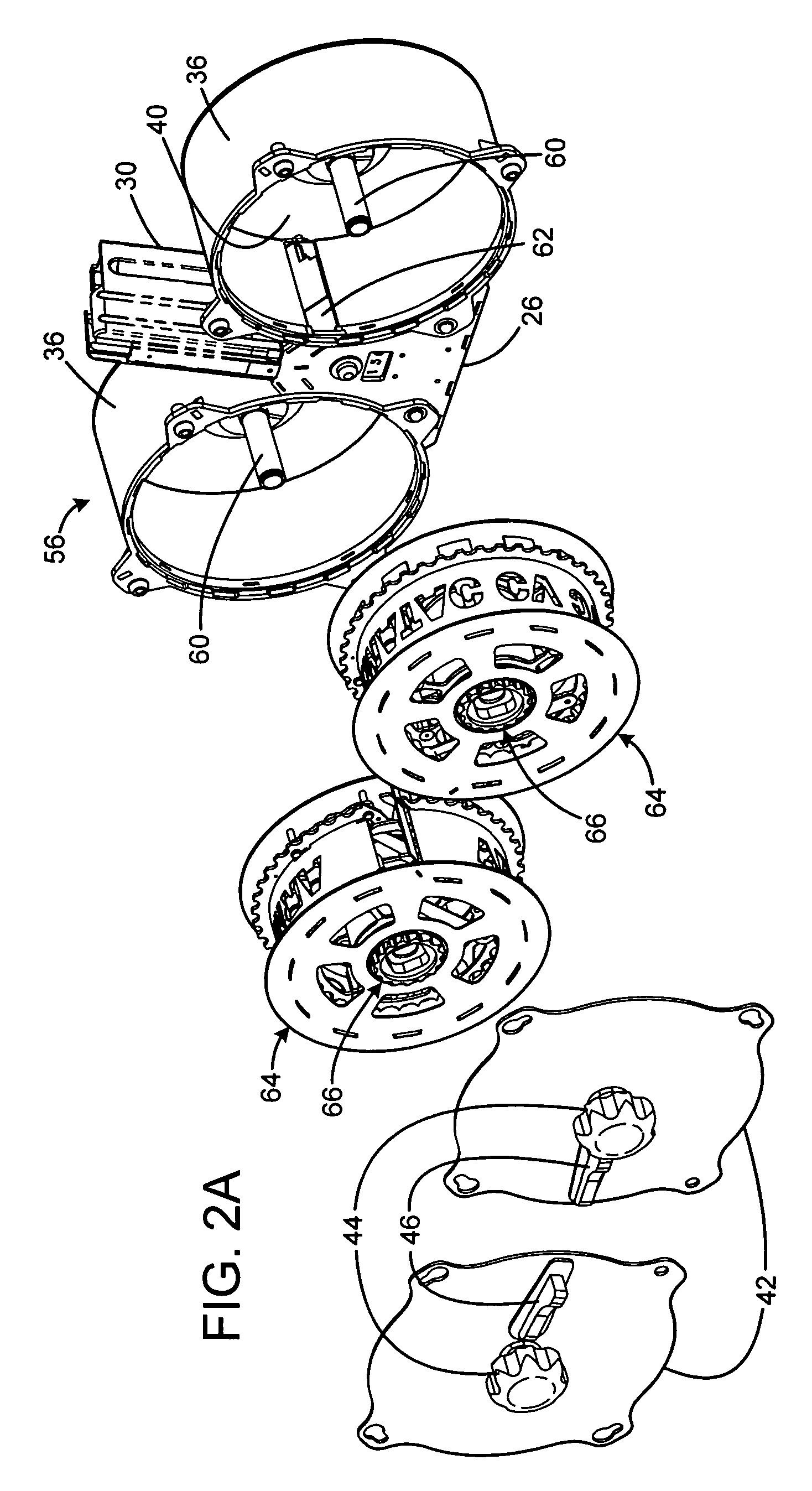Drum magazine for firearm
a drum magazine and firearm technology, applied in the field of drum magazine for firearms, can solve the problems of more complicated and heavy spring system, more vulnerable to enemy fire, and large spring, and achieve the effects of large quantities of ammunition in a short time, small arms, and high firing capacity
- Summary
- Abstract
- Description
- Claims
- Application Information
AI Technical Summary
Benefits of technology
Problems solved by technology
Method used
Image
Examples
Embodiment Construction
[0021]FIG. 1 shows a dual-drum magazine 10 as attached to a rifle 12. The rifle has a barrel with a muzzle end 14 extending in a forward direction and a stock end 16 extending in a rearward direction. The rifle has a magazine well 20 that extends downward from an intermediate portion of the rifle, defining a channel with a rectangular cross section. A bolt reciprocates within the rifle above the magazine well, to strip ammunition rounds from the magazine and to chamber them for firing.
[0022] In the illustrated embodiment, the rifle is an M16, M4, or AR15. However, in alternative embodiments, the rifle may be of any type capable of accepting a detachable magazine. The preferred embodiment is illustrated as an example using 5.56 mm NATO cartridges, but any bottlenecked rifle cartridge or straight-walled pistol cartridge may be accommodated by the invention, as modified to adjust dimensions as needed. The 5.56 mm cartridge is a bottlenecked cartridge having a base, a nearly cylindrica...
PUM
 Login to View More
Login to View More Abstract
Description
Claims
Application Information
 Login to View More
Login to View More - R&D
- Intellectual Property
- Life Sciences
- Materials
- Tech Scout
- Unparalleled Data Quality
- Higher Quality Content
- 60% Fewer Hallucinations
Browse by: Latest US Patents, China's latest patents, Technical Efficacy Thesaurus, Application Domain, Technology Topic, Popular Technical Reports.
© 2025 PatSnap. All rights reserved.Legal|Privacy policy|Modern Slavery Act Transparency Statement|Sitemap|About US| Contact US: help@patsnap.com



